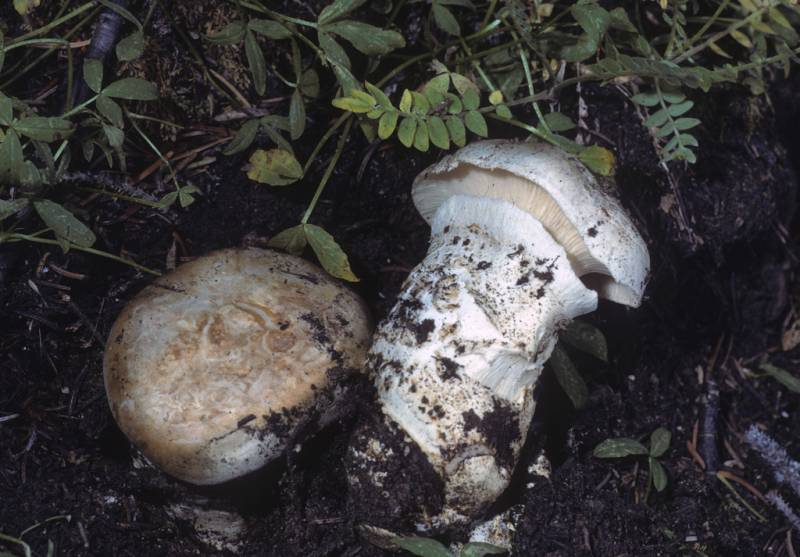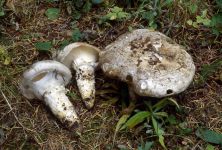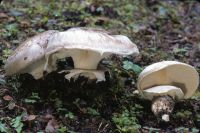Distribution: Catathelasmas usually occur on calcareous soils in conifer forests, often in large local populations, forming arcs or rings of fruitbodies.
Conservation Status: Not of concern
Catathelasma is a rather easy genus to recognize because of its large size, strongly inrolled cap margin, tough texture, long decurrent, crowded, narrow gills, and especially the presence of two veils, an inner one that leaves a conspicuous ring on the upper stipe, and an outer one that leaves an additional narrow ring or ring-zone and patches of tissue below the upper ring. In addition, the flesh has a strong farinaceous odor and taste and the spores are white and amyloid.
There are two species, and both occur in our region. C. ventricosum has a pale to grayish cap and C. imperiale (Quélet) Singer has a brownish cap and is somewhat larger, however, intermediate-sized mushrooms with grayish brown caps are not uncommon.
Sources: Trudell, Steve and Joe Ammirati. Mushrooms of the Pacific Northwest. Portland, Timber Press, Inc. 2009.
PNW Herbaria: Specimen records of Catathelasma ventricosum in the Consortium of Pacific Northwest Herbaria database.
CalPhotos: Catathelasma ventricosum photos.








